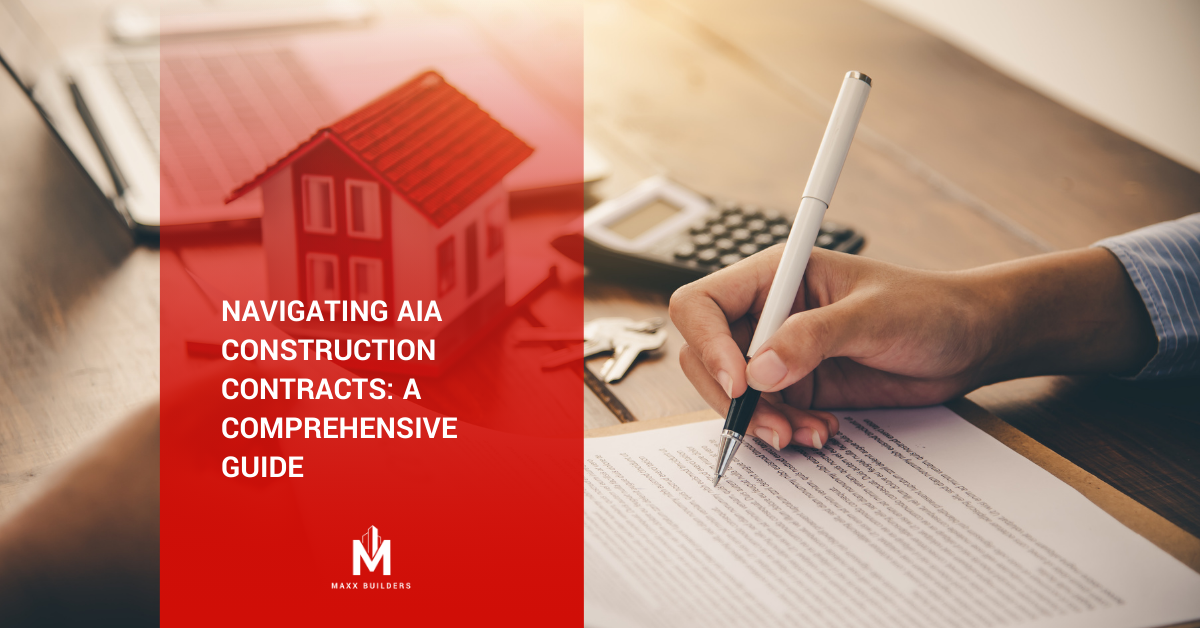Introduction
In the realm of commercial construction, American Institute of Architects (AIA) contracts represent a standard of excellence and reliability. These contracts are widely recognized for their comprehensive nature, covering a vast array of aspects crucial to construction projects. This blog post delves into the intricacies of AIA contracts, offering insights to help you understand and effectively navigate these agreements for your construction projects.
Understanding AIA Contracts
The Foundation of AIA Contracts
- Origin and Significance: AIA contracts, developed by the American Institute of Architects, are standardized documents used across the construction industry. They are designed to balance the interests of all parties involved – owners, contractors, and architects.
- Why AIA Contracts?: These contracts are known for their thoroughness in detailing project scope, terms, and conditions. They are updated regularly to reflect the latest legal practices and industry standards.
Key Features of AIA Contracts
What Sets Them Apart
- Uniformity and Consistency: AIA contracts provide a consistent framework that many in the industry are familiar with, which can streamline negotiations and understanding.
- Flexibility and Adaptability: Despite their standardized nature, AIA contracts can be adapted to fit various project sizes and complexities.
Common Types of AIA Contracts
Choosing the Right Contract for Your Project
- B101 – Standard Form of Agreement Between Owner and Architect: Covers the architect’s services for a full range of services from design to construction.
- A101 – Standard Form of Agreement Between Owner and Contractor (Fixed Price): Used for traditional design-bid-build projects with a fixed price.
- A201 – General Conditions of the Contract for Construction: Establishes the rights, responsibilities, and relationships of the parties involved.
Introduction to AIA Construction Contracts
The American Institute of Architects (AIA) construction contracts set the standard for legal agreements in the construction industry, providing a balanced foundation for all parties involved. From small-scale projects to monumental constructions, AIA contracts aim to protect the interests of both owners and contractors through a comprehensive and standardized set of documents.
Overview of AIA Contracts
AIA contracts have evolved to become the cornerstone of construction project agreements, offering a suite of documents that cater to various aspects of construction and design. Their standardized nature ensures consistency, fairness, and legal integrity across the board.
Evolution of AIA Documents
The historical trajectory of AIA documents reflects significant shifts in construction practices, legal landscapes, and project delivery methods. Recent updates have focused on incorporating digital workflows, addressing sustainability concerns, and enhancing risk management provisions.
The Anatomy of AIA Contracts
Understanding the components of AIA contracts is crucial for effectively leveraging them in construction projects. These contracts are meticulously structured to cover every conceivable aspect of the construction process, from initial bidding to project completion.
Key Components and Their Functions
The essential clauses and sections of AIA contracts are designed to clarify roles, responsibilities, and expectations. By dissecting these components, parties can gain insights into their obligations and the contractual safeguards in place.
Risk Management in AIA Contracts
Risk management is a central theme of AIA contracts, aiming to allocate risks fairly and protect project stakeholders. This section delves into common risks and the mechanisms within AIA contracts designed to mitigate them.
Insurance Requirements
Insurance provisions in AIA contracts are critical for managing financial risks associated with construction projects. Understanding these requirements and their implications can help parties ensure comprehensive coverage.
Implementing AIA Contracts on Projects
Managing Changes and Modifications
The practical application of AIA contracts in project management involves careful planning, clear communication, and adaptability to changing circumstances. This section covers the lifecycle of a project under an AIA contract, from initiation to completion.
Change orders and modifications are inevitable in construction projects. AIA contracts provide a framework for addressing these changes, minimizing disputes and ensuring project continuity.
Dispute Resolution and AIA Contracts
Dispute resolution mechanisms in AIA contracts offer pathways for resolving conflicts without resorting to litigation. This section explores the common causes of disputes and the strategies for effective resolution.
Arbitration and Litigation
Choosing between arbitration and litigation depends on various factors, including the nature of the dispute and the parties’ preferences. Understanding the advantages and disadvantages of each approach can guide decision-making.
The Future of AIA Contracts
The evolution of AIA contracts is ongoing, with emerging trends and innovations shaping their development. This section anticipates future changes, such as the integration of digital technologies and the increasing emphasis on sustainability.
Navigating AIA Construction Contracts
In this essential guide, we’ve explored the intricacies of AIA construction contracts, providing insights into their structure, negotiation, and implementation. As the construction industry continues to evolve, the role of AIA contracts remains pivotal in ensuring successful project outcomes.
Conclusion
AIA contracts are a cornerstone in the world of commercial construction, offering a balanced, comprehensive framework for project agreements. Understanding the nuances of these contracts is crucial for anyone involved in a construction project. While they provide a solid foundation, it’s important to adapt and negotiate specific terms to align with your project’s unique needs and goals.



